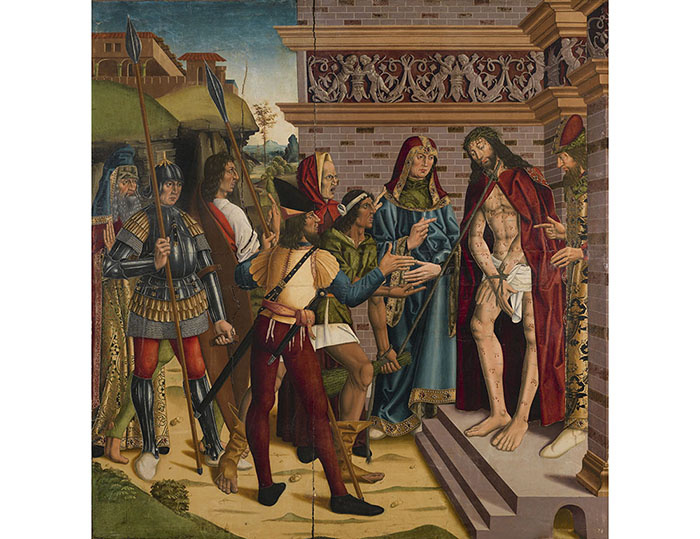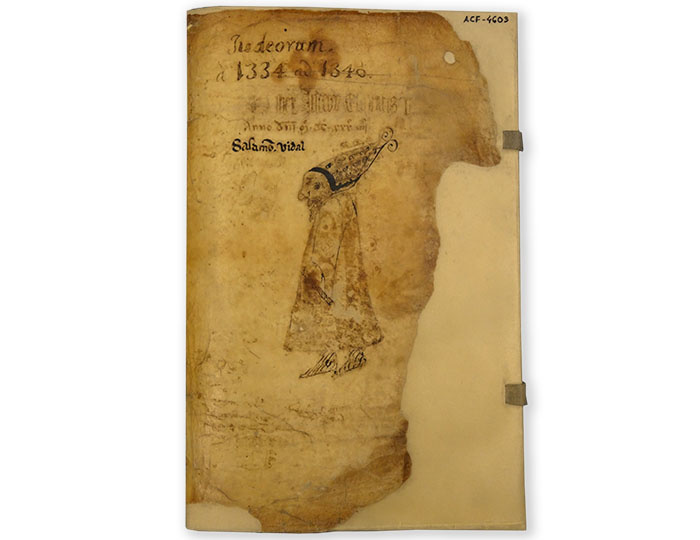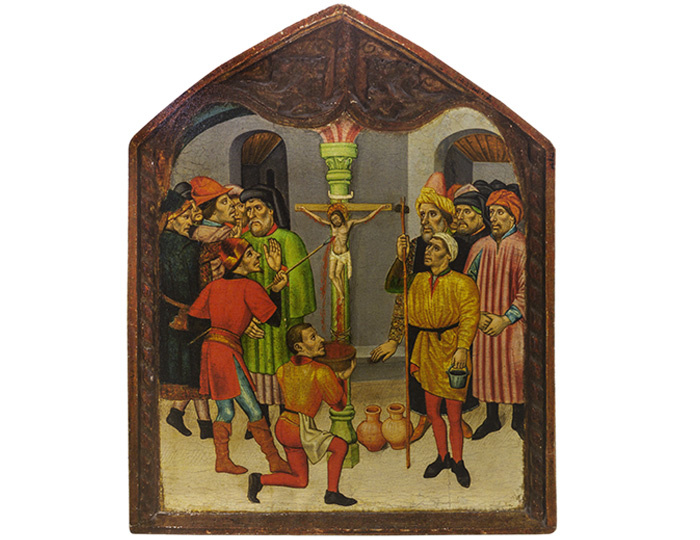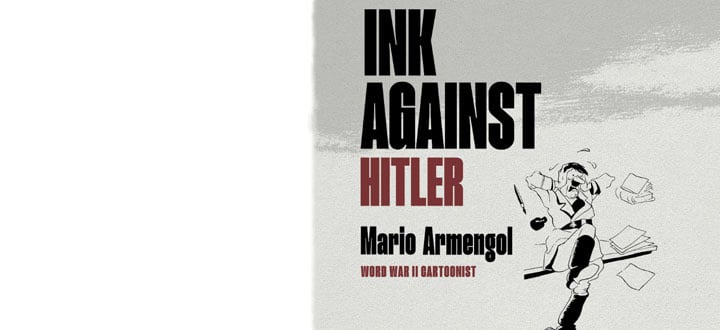Anti-Judaism And Mediatic Images
A varied anti-Jewish iconography began to develop in the late 13th century in a context of systemic violence against the Jews. It ranges from portraits based on caricatures and distinguishing signs (clothing and round badges) to scenes portraying the Jews as enemies of the Christian faith. As in the rest of Western Europe, besides expressing intolerance and prejudice, these degrading images often stemmed from strategies for asserting the Christian identity. We need only look at the scenes showing acts of desecration of cult images and the host, or at the Passion cycles. From a Christian viewpoint, many of these representations were regarded as an effective means of ratifying beliefs that had sparked heated controversy within the Church—for example, the cult of images and of the Eucharist— or of spreading Christocentric devotions. The distorted image of the Jews as desecrators and deicides was a reflection returned by the Christian mirror—an expression of the beliefs, fears and anxieties of the faithful of the Roman Catholic Church.
Eucharistic miracles
The combination of growing anti-Jewish sentiment and the development of the cult of the Eucharist—on the rise since the establishment of the feast of Corpus Christi in 1264—sparked the appearance of numerous libels accusing the Jews of desecrating the Eucharistic host. The specific details of each accusation vary, but they all share a common feature: the Jews attack a sacred host, which miraculously begins to bleed. Like the debates on images, depictions of bleeding hosts were an effective means of publicising such a complex and controversial theological concept as the real presence of Christ in the consecrated host during Mass. The flipside was the increasing stigmatisation of the Jewish people.

Guillem Seguer (?), Altarpiece of Corpus Christi from Vallbona de les Monges, c 1335-45
Tempera, stucco reliefs, gold leaf and varnisched metal plate on panel, 108.8 x 222
Barcelona, Museu Nacional d’Art de Catalunya, MNAC 9920
In the Passion
Saint Augustine had assumed the Jews’ ignorance during the Passion of Christ: according to him, they did not regard Jesus as the Son of God. In medieval anti-Jewish literature, this mitigating circumstance gradually gave way to the idea that they had acted with full awareness and were therefore guilty of outright deicide. This terrible accusation was echoed in texts and images produced in connection with various late medieval devotional movements that advocated an empathetic approach to the Passion of Christ. The device was simple: emphasising the wickedness of the Jews in order to heighten faithful Christians’ feelings of commiseration and pain at Christ’s suffering. The images varied in intensity and spanned the whole spectrum from strictly incriminating to blatantly anti-Judaist.

Alonso de Sedano, Ecce Homo, c. 1495-96
Oil on panel, 141 x 148 cm
Burgos, Museo Diocesano de la Catedral de Burgos. Photo Imagen M.A.S
Caricatures
Christian notarial ledgers known as libri iudeorum record the financial transactions of Jews in Catalonia, especially their loans. Many include caricatures of Jews that reproduce a stereotype repeated since the 13th century, characterised by exaggerated facial features such as a disproportionately large nose and eyes and an unkempt beard. This iconographic device is based on ideas from the ancient world that equated physical diversity with the exotic and monstrous. Actually, these facial deformities should be interpreted as a way of expressing a supposed moral inferiority and give rise to strange, even menacing, individuals. Ultimately, they are used to construct the paradigm of the Other.

Caricature of Salomó Vidal on the cover of a liber iudeorum, 1334-40
Ink on parchment, 310 x 205 mm.
Vic, Arxiu I Biblioteca Episcopal de Vic, Cúria Fumada, ABEV, ACF-4603
The Power of Images
In the 13th century stories of icons, crucifixes and statues of the Virgin coming to life were used by the Church to legitimise the cult of images in the eyes of those who considered it an idolatrous practice. The Christian imagination made Jews the protagonists of violent desecrations that highlighted the miraculous nature of images. Among them were stories inspired by Byzantine accounts or included in European repertoires that reflect many of the negative legends about Jewish people, from their association with the devil to accusations of image desecrations and ritual crimes.

Juan de la Abadía the Elder, Passion of the Christ of Beirut c. 1500
Oil on panel 83,6 x 69,8 cm
New Orleans, The New Orleans Museum of Art, Bequest of Mr. Lynn Dinkins, 38.3










